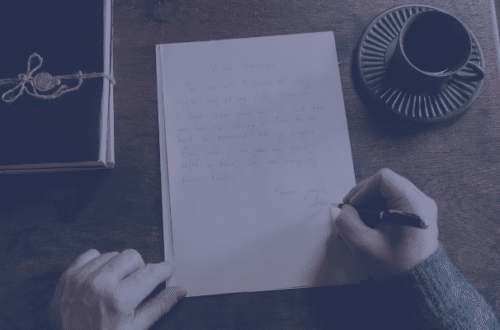
Coming Through Loud and Clear: Cognitive Static Can Suck It
Like any other card-carrying member of Generation X, I had an entire life prior to the digital revolution. It wasn’t until after I graduated high school that I got my first email account. I was an adult with two children before I had a smartphone. In fact, it feels like I’ve lived two very distinct lives over the last half century: one pre-internet, and the one that I’ve been living ever since the internet exploded into everyone’s faces in the 90s taking over our every aspect of our lives.
What this means is that I’ve spent a lot of time doing things that many people born in the last 30 years did not. For example, I have excellent cursive handwriting. I can find things in a library without using a computer. I also know how to navigate across America with nothing but a paper map. For those of you who missed out, I can assure you that pre-digital road trips were grand opportunities to stare out the window at landscapes for hours at a time, exposing yourself to music you don’t even like simply because it was the only thing you could pick up with your car’s antenna.
Which brings me to the point of this month’s newsletter: static.
Static is the noise your stereo makes when you’re out in the middle of nowhere, USA, and out of range of any radio signal that your car’s antenna can pick up. You’d think having no signal would mean silence, but instead what you get is a ghastly noise that has no value. It comes through your speakers in an unrelenting stream letting you know that the radio is, in fact, turned on but no playable music is being transmitted anywhere in your area.
Static on it’s own can be tolerated as white noise (if you’re into that kind of thing) but on the occasion that you are able to pick up a faint signal and pieces of music start to come through, it becomes incredibly frustrating. Through the din of some unseen electric waterfall you’ll hear a few bars of music that appear from seemingly out of nowhere. Then, the music disappears just as suddenly, replaced by that terrible SCKKKKKKKKKKKK sound.
Oh no wait! It’s back again! You start to sing along and get through an entire verse…then… SCKKKKKKKKKKKKKKKK. In and out it fades as you listen to music you didn’t even choose (but are now desperate to hear) for a few seconds at a time, all the while fiddling with the radio and praying to the road trip gods to help you out until you get so annoyed you just shut the damn thing off completely.
Memories of fighting with a static-filled car stereo recently popped into my mind as I’ve been thinking over the creative struggles I’ve experienced throughout my lifetime. For years I’ve tried (and failed) to do any kind of sustained creative work. Sure I’ve shat out lots of garbage content on social media, and written thousands of words of marketing copy – but what I’m really talking about here is the urge to produce something exciting and original – the kind of stuff that comes from the deep wells of the unconscious and represents my artistic vision of the world. Every so often I’d get a good idea start to run with it, only to lose it in the tsunami of mental distraction that is the plague of modern life. I realize now that for many years I’ve been derailed in my efforts by cognitive static.
A few weeks ago on Facebook I mentioned that I’m going through The Artist’s Way again. If you’ve not read it before, it’s a 12-step program for creative recovery. I’m on Week 7 – Recovering a Sense of Connection. Author Julia Cameron talks about how artists are really channels for creativity. When an artist sits down to create something new we’re not so much thinking things up as we are getting them down. I’ve had this experience many times in the past and I’ll bet you have, too. It’s also referred to as flow. Those who choose to pursue their artistic impulses (and by this I mean all artistic endeavors including music, writing, etc.) don’t always know where they’re going when they set out.
We creatives may have a vague inkling what we’re trying to do, but it’s not until we’re out there immersed in our medium of choice, doing the work of taking dictation from our creative source that we find ourselves making all kinds of delightful discoveries. Often what I end up writing looks nothing like what I started with, and that’s because creativity is an adventure. We don’t direct the creative process, we surrender to it; and the purpose of that process isn’t just to produce something but to be changed, deepened and polished as creators.
Engaging with our creativity at a level that allows us mastery over our art means we are willing to dedicate time and energy to listening for it, and to it. There are no shortcuts here. We give ourselves space and silence with which to grab hold of inspiration and wait like a surfer for a wave to roll in so we can ride it all the way. There’s very little as thrilling as losing yourself in your creative endeavors. When I write, I’ll often lose track of time. I’ll look up and hours have flown by. This is how I know I’m on the right track. It’s exhilarating
Unfortunately, it’s nearly impossible to do this when one is constantly being interrupted. Our brains need hours of quiet focus to bring out the potential genius that lurks within every one of us (and yes, I do believe the spark of creative genius is within each and every one of us). This is true even when we’re not actively engaged in making art. The creative process is as much about synthesizing thoughts, feelings and experiences that end up making our art possible.
In this day and age, though, quiet focus is perhaps the rarest of all luxuries.
A couple weeks ago I decided to make some lifestyle changes that I hoped would help me with my writing. This experiment is based on the research I’ve done around cognitive health and neuroplasticity, and in reading the personal stories of creatives I admire. A common theme I’ve discovered is how vital it is to have control of my mind and be able to apply it with great energy toward whatever endeavor I’m currently immersed in birthing creatively. My goal, then, is to sit down to write each day with a brain that is still and clear, free of distraction. I want an open, fertile, equanimous mind that can be focused without excessively taxing myself cognitively.
The first change I made is that I do my best to avoid social media first thing in the morning. In fact, once I check my morning texts from family and creative support groups, I try not to even look at my phone until the afternoons when I’m done writing (though it’s not always possible). My previous work on digital culture has reiterated what many of us already know intuitively: social media is the enemy of a healthy nervous system and a focused mind. You can’t be on any of these apps for more than five minutes without something aggressively attacking your equilibrium and sense of poise. While this kind of nonsense can be fun at times (in a masochistic way, at least) it’s certainly not conducive to maintaining creative flow or provoking original thinking.
The other change I’ve made is that I stopped listening to books or podcasts on my morning walks. Instead, I started listening to light classical music or instrumental jazz. Both of these types of music have the ability to soothe, while also stimulating our minds without giving them something specific to cling to. The result has been like taking a feather and tickling my creative mind awake each day. Combined with fresh, cool morning air and friendly waves from neighbors walking their dogs, I return home and sit at my desk open, calm and ready to listen to the muse.
For years I was frustrated with my attempts at creativity because my flow was blocked, my channel was weak, and I wasn’t able to fully immerse myself in the creative process. I’d get a few great ideas come through before static disrupted that flow, causing me to flounder and then give up. Sometimes this static was the result of circumstances beyond my control, but many times it was a lack of will and self-discipline. I’d sit down to write and find myself surfing the internet or scrolling social media instead. I’d write something for my marketing job and try to pretend that I was being creative. Then I’d wonder why I felt unfulfilled all the time. There were several times over the years I even ‘turned the radio off’ and just refused to even try creating anymore. Rather than listen to shitty music punctuated with static, I just turned off the radio altogether and did without.
These days, though, I’ve got my priorities rearranged. There’s nothing I’m doing in my life right now that is as important as my writing. I plan my day around it. I take proactive steps to make sure I’m in a state that I can do the work I want to do, without interruption. Certainly it’s not possible every day. Life happens, distractions occur. Same as it ever was. The difference is that now I’m actively, consistently doing whatever I have to do to keep my channel clear and my mind receptive. I savor the hours I have in a quiet house with my new extra-clicky keyboard. I’m tuned in and turned on. The music is good and the road ahead is wide open. Let’s turn that shit up, put this baby in fifth gear and see what she can really do.
I’m an independent writer and digital creator doing what I love and not getting rich at it. If you’ve enjoyed anything I’ve written I invite you support me via Patreon. This helps me maintain my online presence and invest in my continued education and practice as an artist. Thank you! – Q




